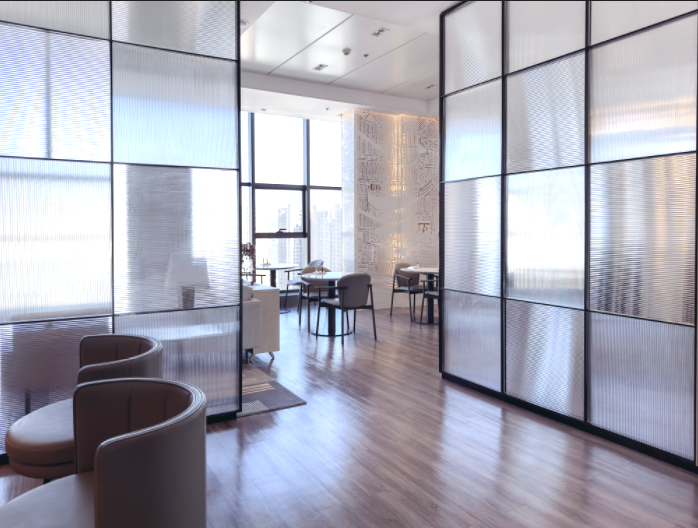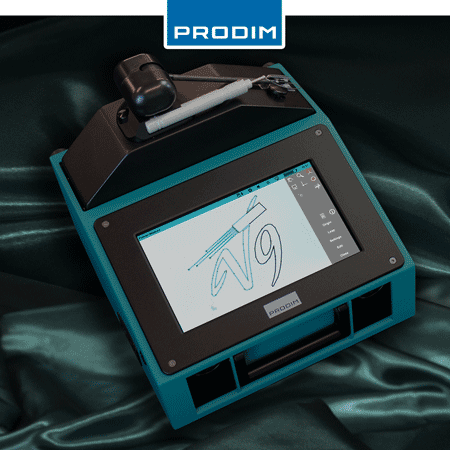Privacy with Glass Texture: The Function and Form of Patterned Glass
Shaping privacy, diffusing light and defining space with decorative glass

Textured patterned glass combines visual appeal with functional performance, making it a go-to solution for privacy, light diffusion and defining spaces. Its versatility across health care, hospitality, retail, and corporate interiors allows glazing contractors to explore a broader range of project types. With its ability to support both design and performance goals, this material opens new business opportunities, helping glazing subcontractors expand their service offerings, increase sales, and improve profitability.
Applications in privacy-centric design
Textured glass is especially effective where a balance of openness and visual privacy is required. In health care environments, it improves patient comfort by screening corridors, waiting rooms and treatment areas while preserving daylight.
In hospitality and food service, it defines spaces such as spas, restrooms and dining areas. Following the pandemic, many establishments replaced temporary barriers with permanent glass partitions to improve hygiene and maintain design continuity.
Common applications
- Hotel lobbies and spa enclosures
- Hospital waiting rooms and patient areas
- Restaurant booths and bar dividers
- Corporate offices and meeting rooms
- Dressing rooms and retail fitting areas
- Shower enclosures and water closets
- Glass railings and partitions
- Kitchen backsplashes, cabinetry and door inserts
Alternative privacy glass options
Alongside textured glass, other architectural glass products offer visual privacy and design flexibility.
- Satin-etched glass
- Digitally printed glass
- Switchable laminated smart glass
- Laminated glass with decorative interlayers
Each option presents unique benefits in light transmission, aesthetics, and user experience, depending on the space and purpose.

What’s trending in glass textures
While classic textures like Stipolite, Rain, Seedy and Glue Chip remain popular, the design trend is shifting toward clean, linear patterns. Architects and designers are increasingly requesting glass that delivers privacy without visually overwhelming the space.
Top trending textures dominating the market include:
- Reeded (Clear and Low Iron)
- Stylos S Low Iron
- Micro Ribbed Low Iron
- Thin Ribbed (Clear and Low Iron)
These textures provide directionality, clarity of pattern, and subtle light diffusion. The rising use of low-iron glass enhances brightness and sharpness of pattern detail, aligning with modern preferences for minimalist, refined aesthetics.
Sourcing and availability
Unlike standard float glass, most patterned glass is imported. International manufacturers offer a broad range of designs, but they often require large minimum orders and extended lead times.
To address this, domestic distributors and larger fabricators often stock patterned glass in select textures and sizes. These sources provide custom-cut pieces, case quantities, and short-lead solutions—ideal for smaller projects or mixed loads.
Processing and fabrication options
Textured glass can be fabricated to suit various design and performance needs. However, certain patterns with deep reliefs may require specialized handling.
Common processing capabilities
- Cutting: Standard and custom shapes
- Edgework: Finished edgework, same as traditional glass types
- Drilling and notching: For hardware compatibility
- Bending: Possible, but some patterns limit flexibility
- Tempering: Most patterns can be heat-treated
- Laminating: Recommended on the smooth side; resin lamination may be needed for deep textures
- Insulating: Can be incorporated into IGUs for energy efficiency
- Back-painting: Used on smooth side to add opacity and visual interest
These fabrication methods support a wide range of commercial glazing configurations.
Performance considerations
Textured glass typically ranges in thickness from 1/8 inch (3 millimeters) to 3/8 inch (10 mm). Depending on the texture depth and glass clarity (standard or low-iron), visible light transmission may range from 50% to 90%, while solar energy transmission can range from 40% to 80%.
It’s important to note that decorative glass products are not always subject to the same rigorous performance testing as energy-efficient or structural glazing systems. Still, they make a meaningful contribution to occupant comfort and design aesthetics.
Practical and aesthetic benefits
Durable and hygienic, patterned glass resists dust buildup and bacteria. These qualities make it especially useful in health care and other high-traffic settings. When tempered or laminated, it can meet the safety glazing requirements for installation in hazardous areas.
Visually, glass textures create depth, rhythm and softness—filtering light, masking distractions, and guiding movement. Designers often choose patterns that reflect the overall design intent and enhance occupant experience.
Glazing contractors value the adaptability of these decorative glass types, as they integrate seamlessly with standard framing systems and installation methods.


